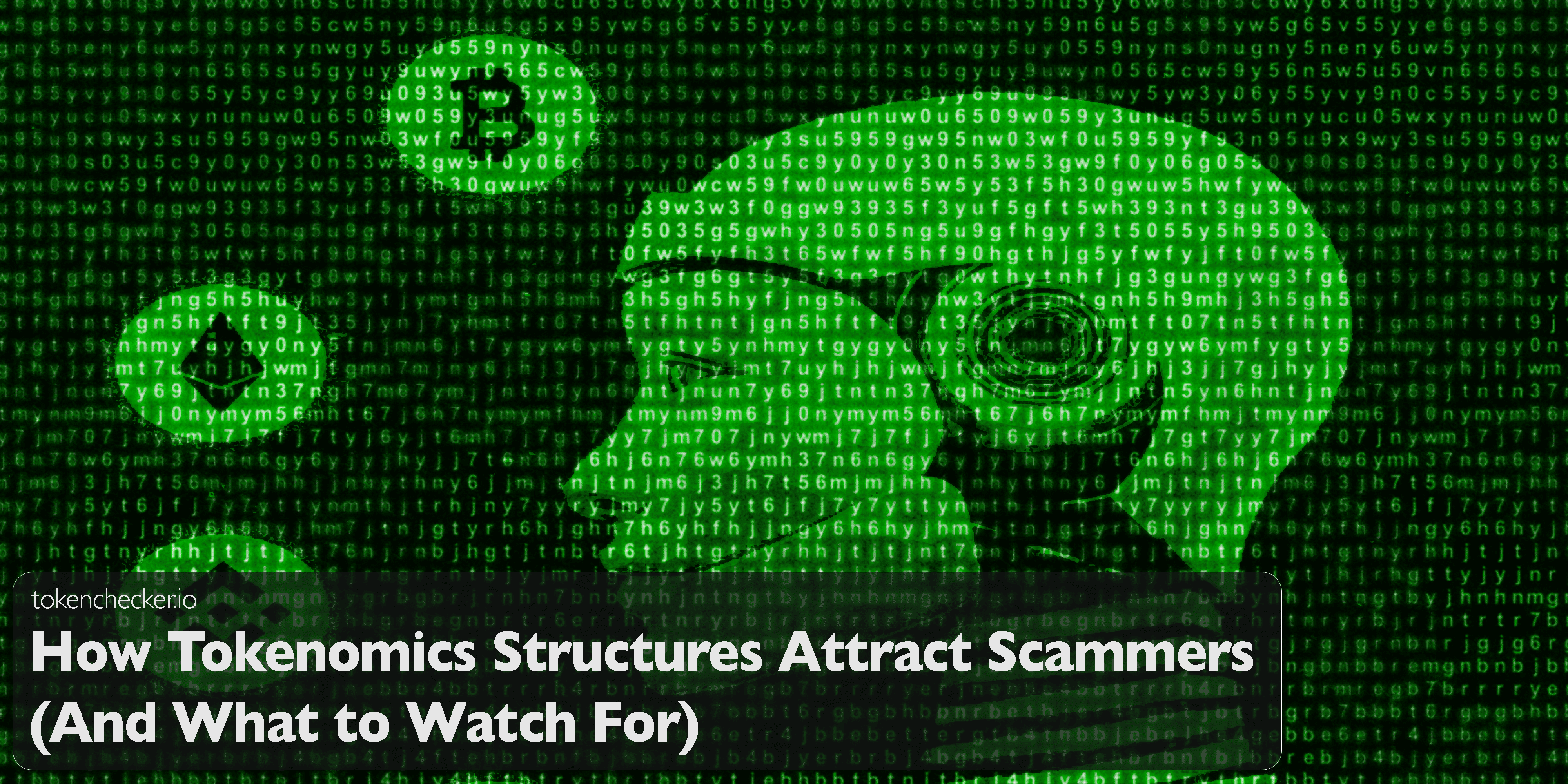
How Tokenomics Structures Attract Scammers (And What to Watch For)
Introduction
Tokenomics can make or break a crypto project. When done right, it drives growth, utility, and investor trust. But when it's poorly designed or intentionally manipulated it becomes the perfect tool for scammers to exploit hype, drain liquidity, and exit with profits.
This article breaks down how scammers use tokenomics as part of their playbook. You'll see which structures to watch out for, how to identify red flags, and how tokenchecker.io can help you evaluate the health of any token before you invest.
What Is Tokenomics?
Tokenomics is short for token economics. It’s the blueprint for how a token works within its ecosystem. This includes:
- Supply — How many tokens exist, and how new ones are introduced.
- Distribution — Who holds the tokens and how they’re allocated.
- Utility — What the token is used for.
- Incentives — What motivates people to buy, hold, or sell.
- Governance — Who makes decisions about changes to the token or protocol.
A good tokenomics model supports long-term value. A bad one props up short-term hype and often hides a slow-motion rugpull underneath.
How Scammers Use Tokenomics Against You
1. Supply That Grows Forever
Some projects keep minting new tokens endlessly. This creates inflation and devalues what holders already own. Other times, minting privileges are kept by the dev, giving them the power to flood the market at any time.
In many scams, this mint function is hidden in the code or triggered via proxy contracts. Investors don't realize what's happening until it's too late.
tokenchecker.io’s Contract Analysis tool flags these mint functions before you buy.
2. Distribution That’s Rigged
Scammers often claim their project is “community owned,” but in reality, a few wallets hold most of the supply.
They might:
- Use stealth distributions to seed insider wallets.
- Lock liquidity for show, while holding the rest in wallets ready to dump.
- Pretend there was a fair launch, when insiders bought everything early.
tokenchecker.io’s Top Holders view and Holder Distribution metrics help reveal this imbalance instantly.
3. Utility That Doesn’t Exist
Projects will say the token is “for governance,” “staking,” or “access,” but in practice, it does nothing. There’s no reason to hold it except for the hope that someone else will buy it from you at a higher price.
This is the classic "greater fool" setup. Once the hype fades, the token dumps.
If you can't answer "what does this token actually do?" that's a red flag.
4. Tokenomics That Encourage Exit Behavior
Some token models reward early users with massive yields, then force later buyers to absorb the dump. You’ll often see:
- Big unlock events right after launch.
- Staking rewards that dilute supply.
- Token burns used to simulate scarcity but only after insider dumping.
Projects like Bitconnect or Olympus-style forks relied on this type of ponzinomics, where each new buyer props up the previous one.
Real-World Examples
Mantra DAO
Used staking as a way to lock up tokens while insiders sold their rewards. Supply inflation outpaced utility. Price collapsed.
SnowdogDAO
Claimed “game theory tokenomics,” but insiders controlled the liquidity event. Retail investors were left holding worthless tokens.
SQUID Token
No real utility, no liquidity exits, but hyped like a blue chip. It was all momentum-driven pump with a hard-coded exit.
How tokenchecker.io Helps
tokenchecker.io makes it easier to spot scammy tokenomics:
- Contract Analysis: Flags mint/burn functions, unlimited approvals, and ownership issues.
- Holder Mapping: Shows wallet concentration and wallet clustering.
- Creator Wallet Tracking: Reveals whether the deployer is buying, selling, or sending tokens to exchanges.
- Liquidity Overview: Tells you if LP is actually locked, burned, or sitting in the dev’s wallet.
- Airdrop + Transfer Tracking: Exposes hidden supply movement and stealth distributions.
These insights help you avoid relying on whitepapers and influencer hype.
Final Thoughts
Tokenomics is one of the easiest places for scammers to hide. It looks like strategy but it's often bait. A complicated pie chart doesn’t mean safety. And staking rewards mean nothing if the token has no value.
Before you trust the tokenomics, ask:
- Who controls the supply?
- What is the token really used for?
- Who benefits when new people buy in?
If the answers aren’t clear, move on.
tokenchecker.io breaks down token mechanics, wallet behavior, and contract risk in seconds so you don’t have to do it blind.